Please help the NWS spread these messages on social media! Everyone is welcome to use the text and images provided below to help the NWS build a Weather-Ready Nation.
Facebook
Spring isn’t always the pleasant season we hope it is: spring storms can bring a variety of hazards to the country, from blizzards to severe weather. Stay informed of the ever-changing weather in your area at weather.gov
Twitter
Stay #WeatherReady for the variety of hazards spring can bring!

Facebook
Although tsunamis are infrequent, they are one of the most powerful and destructive natural forces. There is no season for tsunamis, and they cannot be predicted. Most common in the Pacific Ocean, they can strike any ocean coast. Are you prepared? Learn more at weather.gov/safety/tsunami
Twitter
Destructive and unpredictable, tsunamis pose a major threat to coastal communities. Are you prepared? Learn more here: weather.gov/safety/tsunami
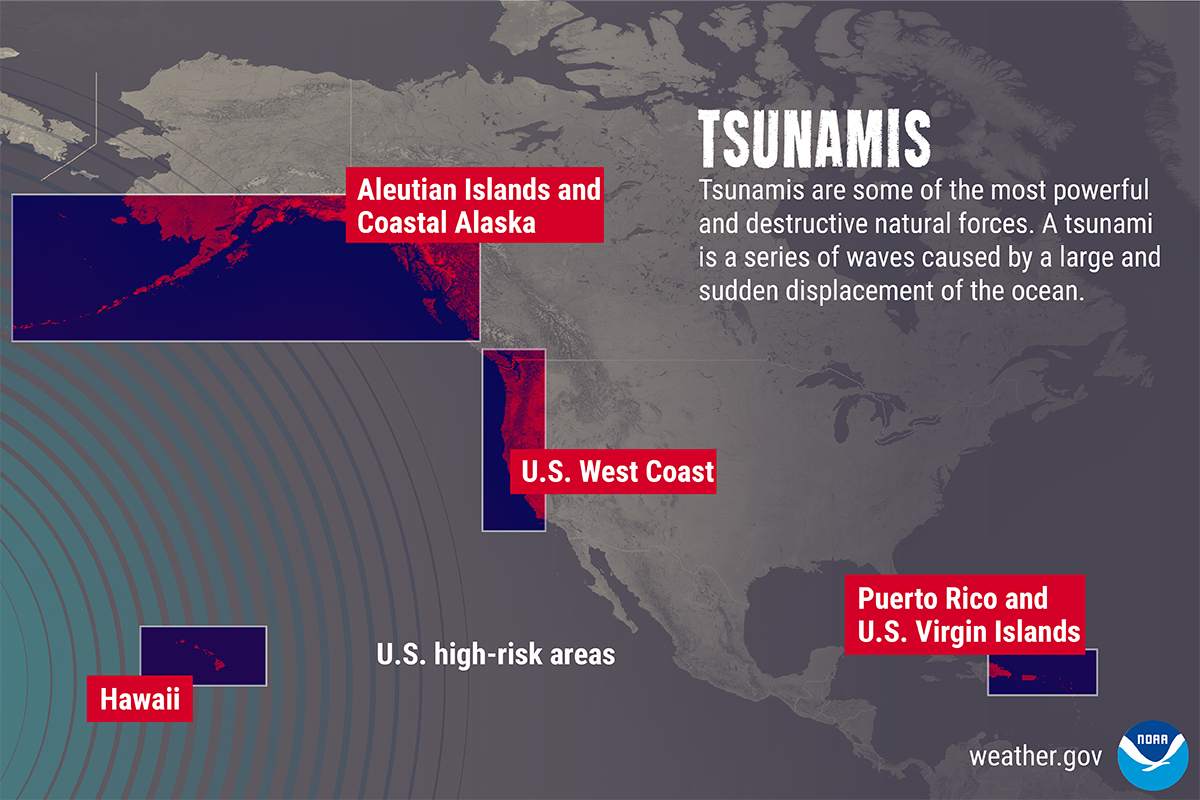
Facebook
Spring along the West Coast can bring heavy rain and snow, which can result in flooding. Don’t attempt to cross flooded roads - it takes only 6 inches of water to knock a person off his/her feet, and only 12 inches to carry away a vehicle. Additionally, the water can be dangerously cold. Read our safety tips to make sure you’re prepared: weather.gov/safety/flood
Twitter
Spring flooding can be hazardous. It takes only 6 inches of water to knock a person off his/her feet, and only 12 inches to carry away a vehicle. Also, the water can be dangerously cold. Make sure you’re #WeatherReady!
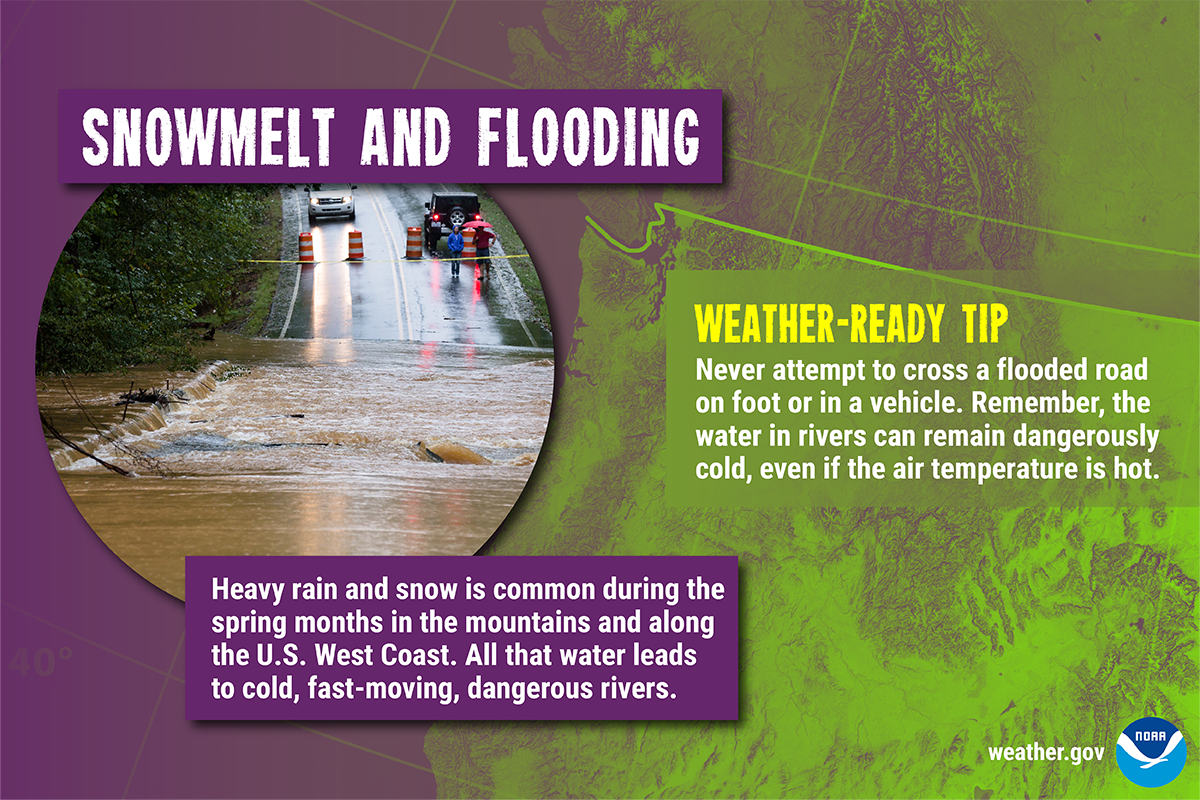
Facebook
High winds can pose a threat to your safety and make traveling difficult. They can occur during a severe thunderstorm, with a large-scale weather system, or can flow down a mountain. Whatever the cause, make sure you’re prepared: weather.gov/safety/wind
Twitter
Whether the high winds are caused by a severe thunderstorm, a large-scale system, or flowing down a mountain, make sure you’re #WeatherReady!
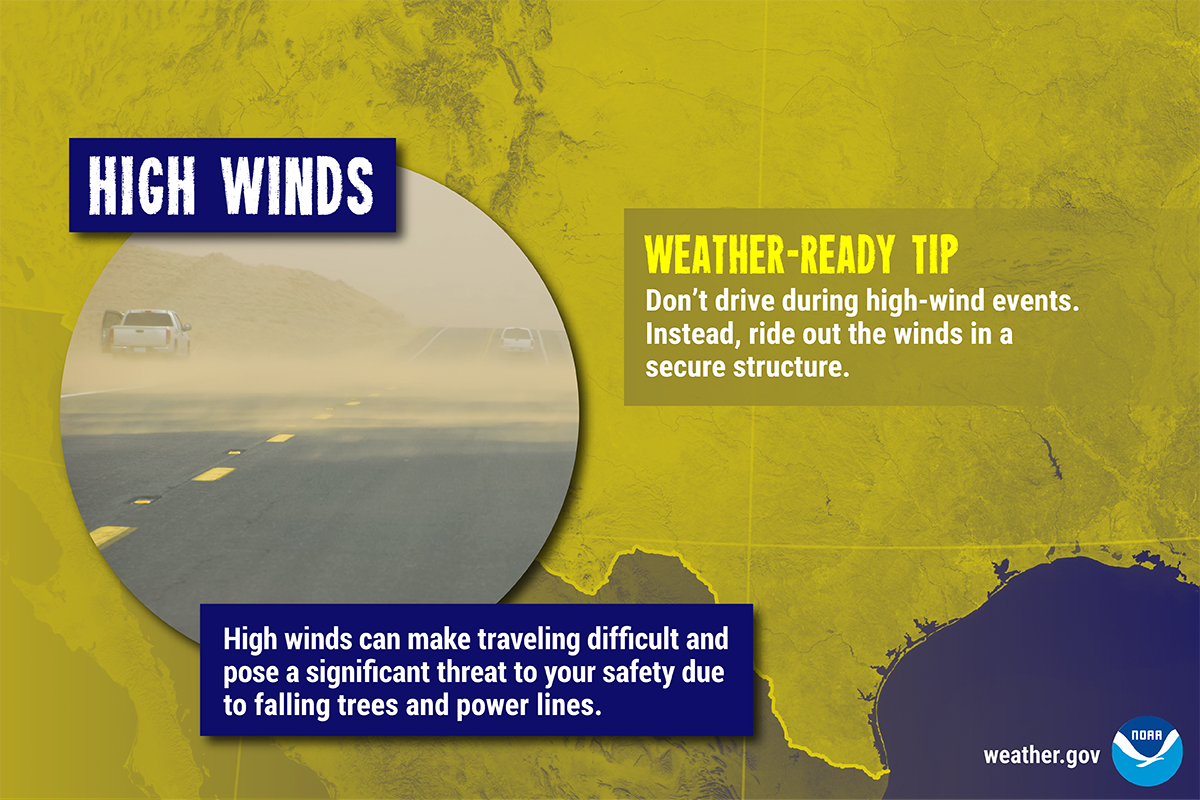
Facebook
Unfortunately, the change of the seasons from winter to spring does not necessarily mean blizzards and cold weather are over. Many of the northern states can receive significant snowfall in March, April, and even May. Make sure you’re informed of the ever-changing weather conditions in your area at weather.gov
Twitter
Blizzards and cold weather can continue into March, April, and May for many of the northern states. Stay #WeatherReady by keeping up with the latest weather forecast for your area.

Facebook
Spring brings the return of severe thunderstorms, which can produce large hail, damaging winds, and sometimes tornadoes. Make sure you know where to take shelter if severe weather approaches, and keep up with the latest watches and warnings at weather.gov
Twitter
You can’t prevent severe weather, but you can prepare for it. Know your safe place to go when weather threatens, and stay #WeatherReady
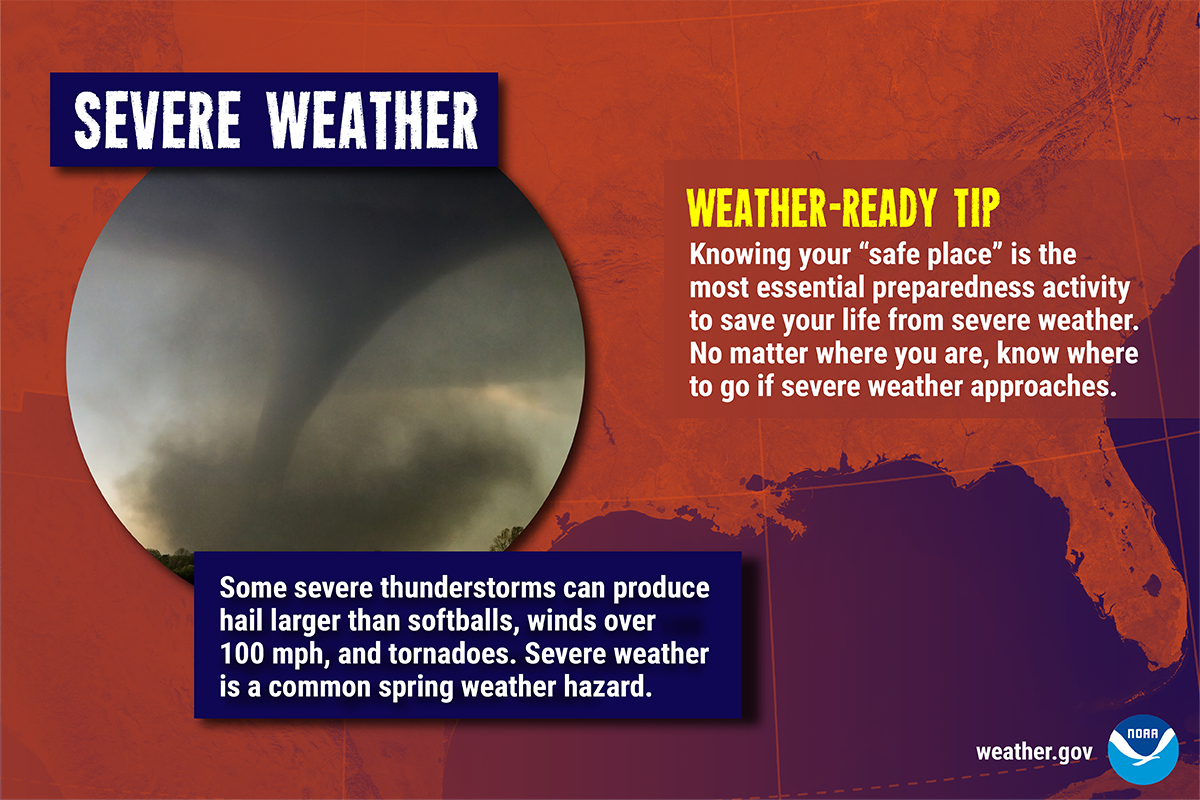
Facebook
The return of warmer weather during springtime calls people toward the beaches; however, even seemingly nice days can be dangerous. Rip currents often form on warm, sunny days. Especially if you’re unfamiliar with swimming in the ocean, make sure you know rip current safety: weather.gov/safety/ripcurrent
Twitter
A warm, sunny day at the beach can turn dangerous when rip currents are present. Learn about rip current safety here: weather.gov/safety/ripcurrent

Facebook
Did you know that heat is one of the leading causes of weather-related fatalities? When the temperature rises, make sure you stay cool, and look out for others as well. Learn more about heat safety at weather.gov/safety/heat
Twitter
Did you know that heat is one of the leading causes of weather-related fatalities? When the temperature rises, make sure you stay cool, and look out for others as well. Stay #WeatherReady!
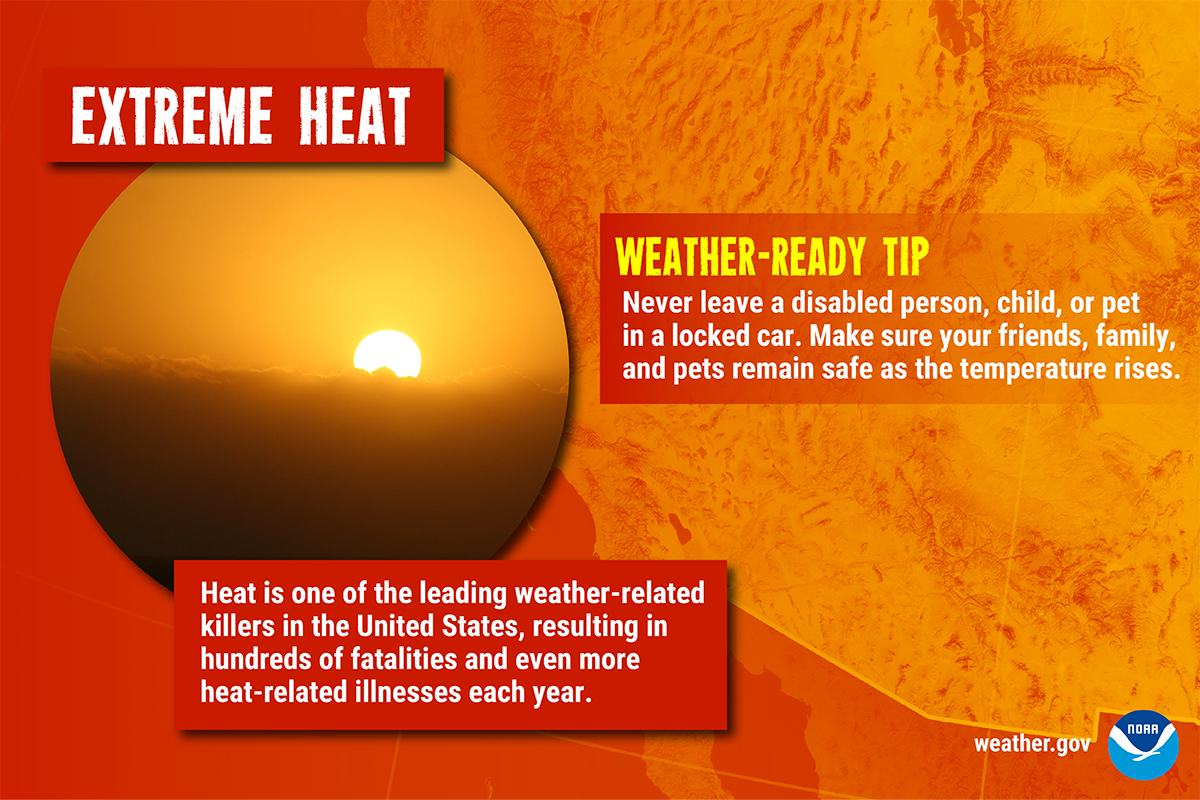
Facebook
As conditions warm up and dry out, wildfires are more likely to start and spread. Especially if you live in an area where wildfires are more likely, make sure you are prepared in the event of one. Clear brush away from your home, plan escape routes, and discuss an emergency plan with your family. Don’t wait until a wildfire happens to figure out what to do! Learn more here: weather.gov/safety/wildfire-ready
Twitter
Don’t wait until you’re threatened by a wildfire to prepare for one. Clear brush away from your home, plan escape routes, and make an emergency plan with your family. Make sure you are #WeatherReady!
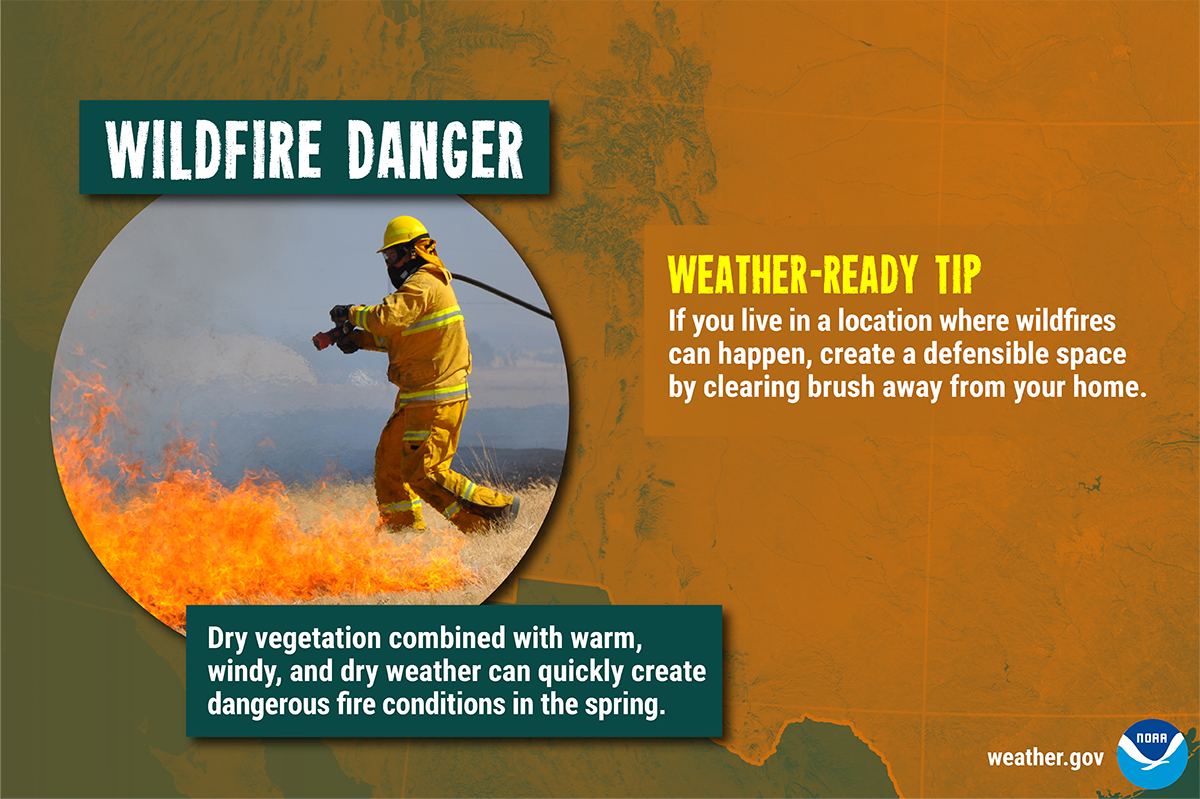
Facebook
Are you at risk for a tsunami? If you’re on an ocean coast, especially the Pacific Ocean, you are. Some areas are more susceptible than others. Find out if you’re in a tsunami hazard or evacuation zone, and whether your community has had tsunamis in the past. Don’t wait until it happens - tsunamis are unpredictable and can strike at any time. Learn more here: weather.gov/safety/tsunami
Twitter
Don’t wait until a tsunami happens to learn what to do. Tsunamis are unpredictable and can strike at any time. Stay #WeatherReady by learning more here: weather.gov/safety/tsunami
